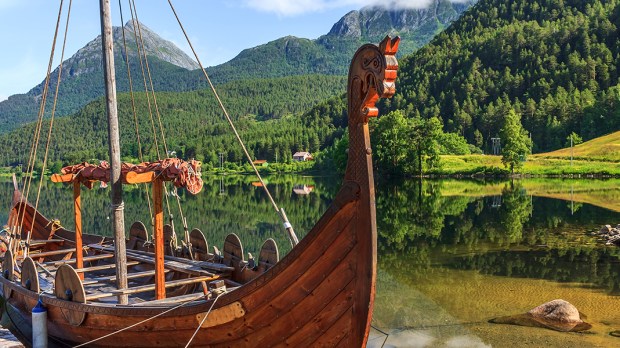Lenten Campaign 2025
This content is free of charge, as are all our articles.
Support us with a donation that is tax-deductible and enable us to continue to reach millions of readers.
What led to the Christianization of the pagan lands of Scandinavia? According to historian John Haywood, it wasn’t the example of the “Prince of Peace.”
Rather, the acceptance of Christianity by the Vikings, late in the first millennium, had more to do with their love of war and power.
Haywood, author of Northmen: The Viking Saga AD 793-1241, told History that Scandinavian kings took a special liking to a Christian idea that authority comes from God. “It gives them an extra claim,” Haywood said.
And then came the Crusades. Most of Scandinavia had been converted to Christianity by 1095 when Pope Urban II issued a plea for Christian armies from Western Europe to aid Byzantine Emperor Alexius I in recapturing the Holy Land from Muslim rule. “Full of religious fervor, the converted Vikings were among the upwards of 100,000 Christians who answered the papal call and joined in the First Crusade,” History states.
Norway’s King Sigurd I became the first European king to lead a Crusade when he sailed off from his homeland in the autumn of 1107 with 3,000 men, the website continued.
“From here on,” Haywood writes, “the crusade turned into a Christianized Viking expedition, no doubt made all the more enjoyable by the conviction that God surely approved of every injury they inflicted on the infidels.” As the Norwegian Crusaders sailed south along the coast of the Iberian Peninsula, they captured Moorish pirate galleys and castles. They attacked Lisbon and sacked a Moorish castle at Colares, massacring the troops that refused to convert to Christianity. “Sigurd is a Christian king, but he still fights like a Viking,” Haywood says. “His motives are different. The way he justifies it are different, but in many ways you can still see the Viking past there once in a while.” After sailing to Sicily and through the Greek archipelago, “Sigurd the Crusader” arrived in the Holy Land at the port of Acre in the summer of 1110 with the loss of only one of his 60 ships. The Norwegian king and his retainers received a warm welcome as they entered Jerusalem. Sigurd was given holy relics, including a splinter from the True Cross on which Jesus was said to have been crucified, and rode with Jerusalem’s King Baldwin I to the River Jordan where he may have been baptized. Before departing, the Norwegian king joined Baldwin in the siege of Sidon and used his fleet to successfully blockade the coastal city and expand Christian gains in the Holy Land. Stopping in Constantinople on his trip home, Sigurd gifted his ships to the Byzantine emperor, and many of his men signed on with the emperor’s Varangian Guard. After traveling overland through Europe, the Norwegian ruler sailed home in a ship given to him by Denmark’s King Niels. “Sigurd consolidates his kingship and returns a great hero,” Haywood says. “It bolsters the prestige of the king in his kingdom.”
“There was much to be gained by kings to be seen as champions of Christendom,” Haywood concluded. “For Danes and Swedes in the Baltic region, they took lands from the Slavs, Finns and Estonians and increased the size of their kingdom as well. So there’s a territorial motive as well as a religious one.”

